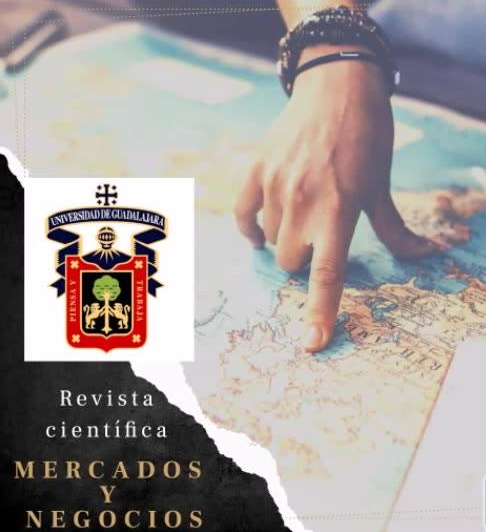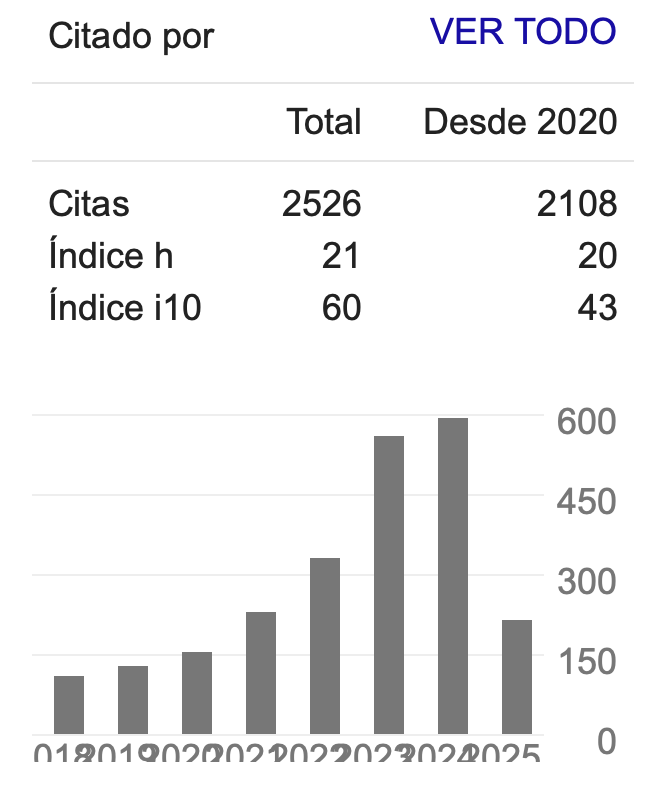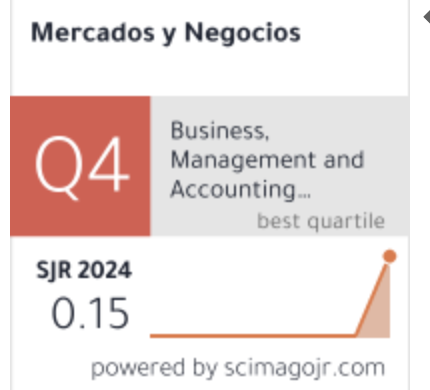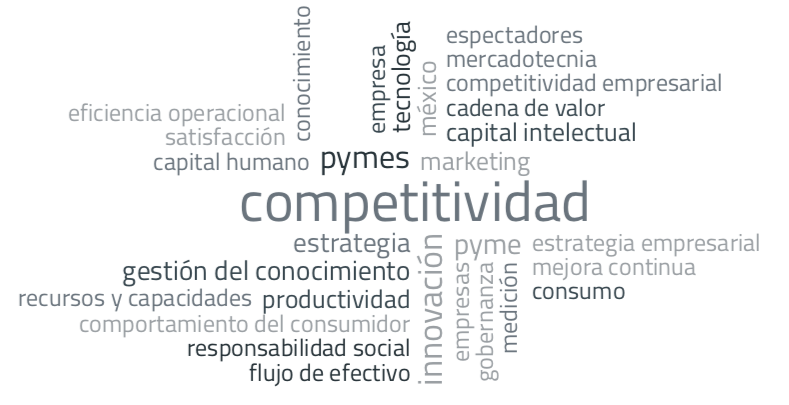Consumer Happiness in the Purchase of Electric Vehicles: a Fuzzy Logic Model
DOI:
https://doi.org/10.32870/myn.vi54.7776Palabras clave:
Fuzzy Logic, Consumer happiness, Fuzzy logic models, Decision-makingResumen
This study analyzes customer happiness in acquiring an electric vehicle, considering pleasure as an ambiguous language term that conventional models have inadequately incorporated. This research was conducted using a fuzzy Delphi method survey targeting a specific consumer group and two fuzzy inference systems: a multi-input single-output FIS model and an FIS Tree employing a hierarchical fuzzy inference structure, which leverages the survey's training data to optimize the models using different machine learning algorithms. The FIS tree model demonstrated superior efficacy in predicting the consumer satisfaction index, achieving an average forecast error of 0.65%. This approach could assist automobile agency marketers in creating accurate predictions to evaluate the purchasing decision-making process.Citas
Aliev, R., & Ahmedov, I. Z. (2004). Fuzzy Delphi Method. « Education » Society of Azerbaijan Republic, 1(1).
Argyle, M., & Crossland, J. (1987). The dimensions of positive emotions. British Journal of Social Psychology, 26(2), 127–137. https://doi.org/10.1111/j.2044-8309.1987.tb00773.x
Asociación Mexicana de la Industria Automotríz, (2023). Ventas de Vehículos Híbridos y Eléctricos. Ventas de Vehículos Híbridos y Eléctricos. Link: https://amia.com.mx/ventas-de-vehiculos-hibridos-y-electricos1/
Aungkulanon, P., Atthirawong, W., & Luangpaiboon, P. (2023). Fuzzy Analytical Hierarchy Process for Strategic Decision Making in Electric Vehicle Adoption. Sustainability, 15(8), 7003. https://doi.org/10.3390/su15087003
Bahreini, K., van der Vegt, W., & Westera, W. (2019). A fuzzy logic approach to reliable real-time recognition of facial emotions. Multimedia Tools and Applications, 78(14), 18943–18966. https://doi.org/10.1007/s11042-019-7250-z
Barbosa, B. (2017). Happiness in marketing. Entornos Creativos, Empleados Felices: Una Ventaja Competitiva In La Gestión Empresarial y Territorial, 75–90.
Bettingen, J. F., & Luedicke, M. K. (2009). Can brands make us happy? A research framework for the study of brands and their effects on happiness. Advances in Consumer Research, 36(January 2009), 308–315.
Bettiga, D., & Lamberti, L. (2020). Future-Oriented Happiness: Its Nature and Role in Consumer Decision-Making for New Products. Frontiers in Psychology, 11. https://doi.org/10.3389/fpsyg.2020.00929
Bhattacharjee, A., & Mogilner, C. (2014). Happiness from ordinary and extraordinary experiences. Journal of Consumer Research, 41(1), 1–17. https://doi.org/10.1086/674724
Bojanowska, A., & Kulisz, M. (2023). Using Fuzzy Logic to Make Decisions Based on Data from Customer Relationship Management Systems. Advances in Science and Technology Research Journal, 17(5), 269–279. https://doi.org/10.12913/22998624/172374
Bradburn, N. (1969). The Structure of Psychological Well-Being. In The Structure of Psychological Well-Being (1st ed.). Aldine Publishing Company. https://doi.org/10.5980/jpnjurol1928.62.8_616
Bruhn, M., & Schnebelen, S. (2017). Brand Happiness: The Searching and Finding of the "Holy Grail" of Marketing. Die Unternehmung, 71(4), 464–490. https://doi.org/10.5771/0042-059X-2017-4-464
Chaturvedi, D. K. (2010). Modeling and Simulation of Systems Using Matlab and S (1st ed.). Taylor & Francis Group.
Cherrier, H., & Lego, C. (2007). A Reflection on Consumers' Happiness: The Relevance of Care for Others, Spiritual Reflection, and Financial Detachment. Journal of Research for Consumer, 01(12), 1–23.
Comisión Nacional para el Uso Eficiente de la Energía-Secretaría de Energía. (2023). Electromovilidad en México. Comisión Nacional para el Uso Eficiente de la Energía-Secretaría de Energía.
DeVoe, S. E., & House, J. (2012). Time, money, and happiness: How does putting a price on time affect our ability to smell the roses? Journal of Experimental Social Psychology, 48(2), 466–474. https://doi.org/10.1016/j.jesp.2011.11.012
Dunn, E. W., Gilbert, D. T., & Wilson, T. D. (2011). If money doesn't make you happy, then you probably aren't spending it right. Journal of Consumer Psychology, 21(2), 115–125. https://doi.org/10.1016/j.jcps.2011.02.002
Dutta, T., & Kumar, M. (2021). Consumer Happiness: Multiple Perspectives. Springer International Publishing. https://doi.org/10.1007/978-981-33-6374-8
Easterlin, R. A. (2001). Income and Happiness: Towards a Unified Theory. The Economic Journal, 111(473), 465–484.
Emrouznejad, A., & Ho, W. (2017). Fuzzy Analytic Hierarchy and Fuzzy Set Theory. In A. Emrouznejad & W. Ho (Eds.), Fuzzy Analytic Hierarchy Process (1st ed., Issue July). Taylor & Francis Group. https://doi.org/10.1201/9781315369884
Enache, I. C. (2015). Fuzzy logic marketing models for sustainable development. Bulletin of the Transilvania University of Braşov Series V: Economic Sciences, 8(57).
Eti, S., Dinçer, H., Yüksel, S., & Gökalp, Y. (2024). A New Fuzzy Decision-Making Model for Enhancing Electric Vehicle Charging Infrastructure. Spectrum of Decision Making and Applications, 2(1), 94-99. https://doi.org/10.31181/sdmap21202513
Fan, Z., Gou, J., & Weng, S. (2024). A Novel Fuzzy Feature Generation Approach for Happiness Prediction. IEEE Transactions on Emerging Topics in Computational Intelligence, 8(2), 1595-1608.
Geramian, A., & Abraham, A. (2021). Customer classification: A Mamdani fuzzy inference system standpoint for modifying the failure mode and effect analysis based three dimensional approach. Expert Systems with Applications, 186, 115753. https://doi.org/10.1016/j.eswa.2021.115753
Gong, T., & Yi, Y. (2018). The effect of service quality on customer satisfaction, loyalty, and happiness in five Asian countries. Psychology and Marketing, 35(6), 427–442. https://doi.org/10.1002/mar.21096
Gupta, S., and Gupta, S. (2024). What drives customers crazy for green vehicles? A fuzzy AHP approach. Environment, Development and Sustainability. 26, 23283–23302. https://doi.org/10.1007/s10668-023-03599-x
Helliwell, J. F., Layard, R., & Sachs, J. D. (2023). World Happiness Report 2023. In Sustainable Development Solutions Network. Link: https://worldhappiness.report/ed/2023/
Hills, P., & Argyle, M. (2002). The Oxford Happiness Questionnaire: A compact scale for the measurement of psychological well-being. Personality and Individual Differences, 33(7), 1073–1082. https://doi.org/10.1016/S0191-8869(01)00213-6
Hooke, R., Jeeves, T. A., (1961). “Direct Search" Solution of Numerical and Statistical Problems. Journal of the ACM, 8(2), 212–29. https://doi.org10.1145/321062.321069
Hussain, S., Ahmed, M. A., Lee, K. B., & Kim, Y. (2020). Fuzzy Logic Weight-Based Charging Scheme for Optimal Distribution of Charging Power among Electric Vehicles in a Parking Lot. Energies, 13(12), 3119. https://doi.org/10.3390/en13123119
International Energy Agency. (2023). Global EV Outlook 2023. IEA
Jena, R. (2020). An empirical case study on Indian consumers' sentiment towards electric vehicles: A big data analytics approach. Industrial Marketing Management. 90, 605-616. https://doi.org/10.1016/j.indmarman.2019.12.012
Kammann, R., & Flett, R. (1983). Affectometer 2: A scale to measure the current level of general happiness. Australian Journal of Psychology, 35(2), 259–265. https://doi.org/10.1080/00049538308255070
Kang, X., & Zhu, Q. (2022). Integrated fuzzy linguistic preference relations approach and fuzzy Quality Function Deployment to the sustainable design of hybrid electric vehicles. Concurrent Engineering, 30(4) 367-381. https://doi.org/10.1177/1063293X221117291
Kennedy, J. (2011). Particle Swarm Optimization. In: Sammut, C., Webb, G.I. (eds) Encyclopedia of Machine Learning. Springer, Boston, MA. https://doi.org/10.1007/978-0-387-30164-8_630
Khan, S., & Hussain, M. (2013). Determinants of Consumer Happiness and its Role In Customer Loyalty. SSRN Electronic Journal, 11–19. https://doi.org/10.2139/ssrn.2269677
Kim, H. Y., & Lee, Y. (2019). The Effect of Online Customization on Consumers' Happiness and Purchase Intention and the Mediating Roles of Autonomy, Competence, and Pride of Authorship. International Journal of Human-Computer Interaction, 36(5), 403–413. https://doi.org/10.1080/10447318.2019.1658375
Kim, D., & Yoon, Y. (2023). The Influence of Consumer Purchases on Purchase-Related Happiness: A Serial Mediation of Commitment and Selective Information Processing. Behavioral Sciences, 13(5), 396. https://doi.org/10.3390/bs13050396
Kozma, A., & Stones, M. J. (1980). The measurement of happiness: Development of the Memorial University of Newfoundland Scale of Happiness (MUNSH). Journals of Gerontology, 35(6), 906–912. https://doi.org/10.1093/geronj/35.6.906
Kumar, A. (2021). Analyzing the drivers of customer happiness at authorized workshops and improving retention. Journal of Retailing and Consumer Services, 62(January), 102619. https://doi.org/10.1016/j.jretconser.2021.102619
Liang, C. C., Yu, A. P. I., & Le, T. H. (2021). Customers focus and impulse buying at night markets. Journal of Retailing and Consumer Services, 60(168), 102434. https://doi.org/10.1016/j.jretconser.2020.102434
Lin, H., Gursoy, D., & Zhang, M. (2020). Impact of customer-to-customer interactions on overall service experience: A social servicescape perspective. International Journal of Hospitality Management, 87(March), 102376. https://doi.org/10.1016/j.ijhm.2019.102376
MahmoumGonbadi, A., Katebi, Y., & Doniavi, A. (2019). A generic two-stage fuzzy inference system for dynamic prioritization of customers. Expert Systems with Applications, 131, 240–253.
Martínez, J. R. (2012). EDUARDO DÍAZ CANO (2009), Una aproximación a Troeltsch. Madrid, Dykinson. EMPIRIA. Revista de Metodología de las Ciencias Sociales, (23), 228-231.
Meier, A., & Donzé, L. (2012). Fuzzy methods for customer relationship management and marketing: Applications and classifications (1st ed.). IGI Global. https://doi.org/10.4018/978-1-4666-0095-9
Meier, A., Portmann, E., Stoffel, K., & Terán, L. (2017). Application of Fuzzy Logic for Managerial Decision Making Processes. Springer International Publishing.
Mogilner, C. (2010). The pursuit of happiness: Time, money, and social connection. Psychological Science, 21(9), 1348–1354. https://doi.org/10.1177/0956797610380696
Mogilner, C., Aaker, J., & Kamvar, S. D. (2012). How happiness affects choice. Journal of Consumer Research, 39(2), 429–443. https://doi.org/10.1086/663774
Naghadehi, M. Z., Mikaeil, R., & Ataei, M. (2009). The application of the fuzzy analytic hierarchy process (FAHP) approach to the selection of optimum underground mining method for Jajarm Bauxite Mine, Iran. Expert Systems with Applications, 36(4), 8218–8226. https://doi.org/10.1016/j.eswa.2008.10.006
Nayak, G. K., Narayanan, S. J., & Paramasivam, I. (2013). Development and comparative analysis of fuzzy inference systems for predicting customer buying behavior. International Journal of Engineering and Technology, 5(5), 4093–4108.
Nicolao, L., Irwin, J. R., & Goodman, J. K. (2009). Happiness for sale: Do experiential purchases make consumers happier than material purchases? Journal of Consumer Research, 36(2), 188–198. https://doi.org/10.1086/597049
Prentice, C. & Wang, X., & Loureiro, S. (2019). The influence of brand experience and service quality on customer engagement. Journal of Retailing and Consumer Services. 50, 50-59.
Razmus, W., Grabner-Kräuter, S., Kostyra, M., & Zawadzka, A.M. (2022). Buying happiness: How brand engagement in self-concept affects purchase happiness. Psychology and Marketing, 39(11)2096, 2109. https://doi.org/10.1002/mar.21714
Rawson, A., Duncan, E., & Jones, C. (2013). The Truth About Customer Experience. Harvard Business Review. Link: https://hbr.org/2013/09/the-truth-about-customer-experience
Reena, R., & Dangi, H. K. (2023, February). Emergence of Consumer Happiness: A Bibliometric Study. In Proceedings of the International Conference on Application of AI and Statistical Decision Making for the Business World, ICASDMBW 2022, 16-17 December 2022, Rukmini Devi Institute of Advanced Studies, Delhi, India. https://doi.org/10.4108/eai.16-12-2022.2326239
Robertson, R. W. (2016). The relationships between leisure and happiness. World Leisure Journal, 58(4), 242–244. https://doi.org/10.1080/16078055.2016.1225880
Rosário, A. T., Dias, J. C., & Ferreira, H. (2023). Bibliometric Analysis on the Application of Fuzzy Logic into Marketing Strategy. Businesses, 3(3), 402–423. https://doi.org/10.3390/businesses3030025
Saaty, R. W. (1987). The analytic hierarchy process-what it is and how it is used. Mathematical Modelling, 9(3–5), 161–176. https://doi.org/10.1016/0270-0255(87)90473-8
Sadikoglu, G., & Saner, T. (2019). Fuzzy logic-based modeling of decision buying process. In 13th International Conference on Theory and Application of Fuzzy Systems and Soft Computing — ICAFS-2018. ICAFS (896). Springer International Publishing. https://doi.org/10.1007/978-3-030-04164-9_26
Schmitt, B. (1999). Experiential Marketing. Journal of Marketing Management,15, 53–67. https://doi.org/10.1362/026725799784870496
Shaopei, L., & Guohua, Z. (2023). Fuzzy Quantitative Management Principles, Methodologies, and Applications. In Springer Nature Singapore Pte Ltd. and Shanghai Jiao Tong University Press (1st ed.). Springer Nature Singapore Pte Ltd. and Shanghai Jiao Tong University Press. https://doi.org/10.5771/9783748924418-207
Srivastava, M. & Kaul, D. (2016). Exploring the link between customer experience–loyalty–consumer spend. Journal of Retailing and Consumer Services. 31, 277-286. https://doi.org/10.1016/j.jretconser.2016.04.0
Söderlund, M., & Rosengren, S. (2010). The happy versus unhappy service worker in the service encounter: Assessing the impact on customer satisfaction. Journal of Retailing and Consumer Services, 17(2), 161–169. https://doi.org/10.1016/j.jretconser.2010.01.001
Söderlund, M., Rosengren, S., Hellén, K., & Sääksjärvi, M. (2011). Happiness as a predictor of service quality and commitment for utilitarian and hedonic services. Psychology and Marketing, 17(2), 934–957. https://doi.org/10.1016/j.jretconser.2010.01.001
Tadi, D., Pu, H., & Bori, S. (2016). A New Fuzzy Model for Determining Happiness Level at The Individual. 1st International Conference on Quality of Life June 2016, June, 67–76.
Thomas, R., & Millar, M. (2013). The effects of material and experiential discretionary purchases on consumer happiness: Moderators and mediators. Journal of Psychology: Interdisciplinary and Applied, 147(4), 345–356. https://doi.org/10.1080/00223980.2012.694378
Tu, Y., Hsee, C. K. (2016). Consumer happiness derived from inherent preferences versus learned preferences. Current Opinion in Psychology, 10, 83-88. https://doi.org/10.1016/j.copsyc.2015.12.013
Ulyanov, S. V. (2020). Quantum fuzzy inference based on quantum genetic algorithm: Quantum simulator in intelligent robotics. In Advances in Intelligent Systems and Computing: Vol. 1095 AISC. https://doi.org/10.1007/978-3-030-35249-3_9
Van Boven, L., & Gilovich, T. (2003). To Do or to Have? That Is the Question. Journal of Personality and Social Psychology, 85(6), 1193–1202. https://doi.org/10.1037/0022-3514.85.6.1193
Wang, H., Cheng, Z., & Smyth, R. (2019). Consumption and Happiness. Journal of Development Studies, 55(1), 120–136. https://doi.org/10.1080/00220388.2017.1371294
Widjaja, M., Morrison, R. E., & Sugianto, L. F. (2002). An electricity market simulator using MATLAB. Journal of Electrical and Electronics Engineering, Australia, 22(1), 77–83.
World Resource Institute. (2023). Electric Mobility. Link: https://www.wri.org/cities/electric-mobility
Yogi, K. (2016). An Empirical & Fuzzy Logic Approach to Product Quality and Purchase Intention of Customers in Two Wheeler. Pacific Science Review B: Humanities and Social Sciences, 1(1), 57-69. https://doi.org/10.1016/j.psrb.2016.02.001
Descargas
Publicado
Cómo citar
Número
Sección
Licencia
Derechos de autor 2024 Fernando

Esta obra está bajo una licencia internacional Creative Commons Atribución-NoComercial 4.0.
Mercados y Negocios por Departamento Mercadotecnia y Negocios Internacionales. Universidad de Guadalajara se distribuye bajo una Licencia Creative Commons Atribución-NoComercial 4.0 Internacional.
Basada en una obra en http://revistascientificas.udg.mx/index.php/MYN/.
Los autores conservan los derechos de autor.








